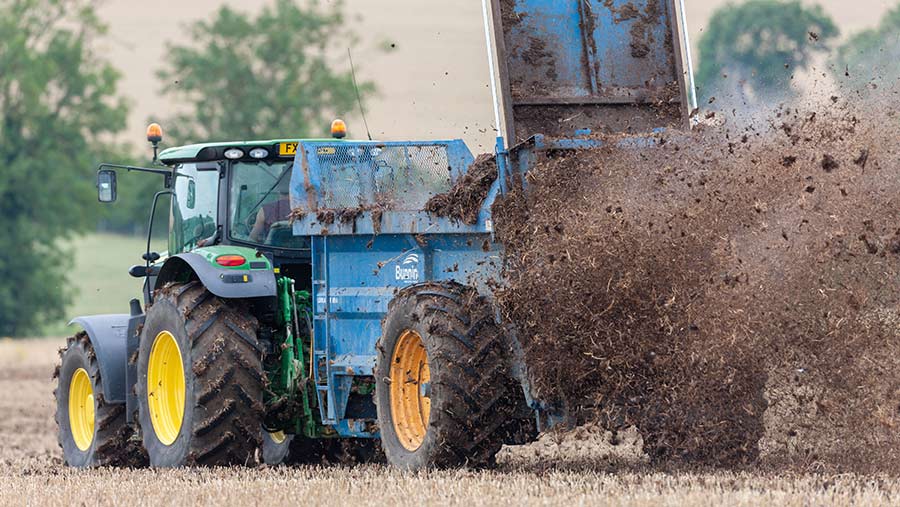Nitrous oxide emissions from soils slashed by adding manure
 © Tim Scrivener
© Tim Scrivener Wider application of organic matter in arable systems has the potential to reduce nitrous oxide emissions and agriculture’s contribution to climate change, research shows.
Nitrous oxide is roughly 300 times more potent than carbon dioxide as a greenhouse gas, and fertilised soils are a major source.
The gas also contributes to ozone depletion, and human-induced emissions of the gas have increased worldwide by 30% over the past 40 years – mainly through an increased use of chemical fertilisers.
See also: How Herefordshire mixed farmer won Soil Farmer of the Year
However, a team at Rothamsted Research in Hertfordshire found that adding carbon-rich manure to soils can dramatically reduce emissions of the potent greenhouse gas.
Doing so essentially “locks in” nitrogen as it is no longer turned into nitrous oxide gas by microbes such as fungi and bacteria.
The research by microbiologist Professor Andrew Neal and colleagues was published in the journal Nature Food on 22 December.
Using archived samples and new data collected from the 179-year-old Broadbalk wheat experiment, Prof Neal’s team compared a variety of soils, including those that had received nitrogen fertiliser inputs ranging from none up to 240kg/ha a year, and those getting only farmyard manure.
They also looked at soil from a woodland created in 1882, and soil from another experiment under a mown pasture.
The researchers found that increasing the organic matter in soils leads microbes to secrete sticky polymers that produce a well-connected network of relatively small pores.
It is this structural feature of soil that also determines the fate of soil nitrogen.
They also found that arable soils receiving inorganic fertilisers were able to retain only half the amount of nitrogen compared with soils receiving farmyard manure, with the losses mainly in the form of nitrous oxide gas.
Carbon and nitrogen link
Analysis of the data strongly suggests this is because carbon and nitrogen are inexorably linked within soils – and to a much greater extent than ever realised.
Prof Neal said: “Our latest findings show that it is organic matter’s impact on soil structure that influences how nitrogen is metabolised in soils.
“Greater pore connectivity in carbon-rich soil allows air to circulate and means microbes are metabolising nitrogen in such a way as to reduce nitrous oxide emissions.”
Previous Rothamsted-led research showed how carbon plays a key role in determining the very structure of soil, and subsequently, how it functions.

